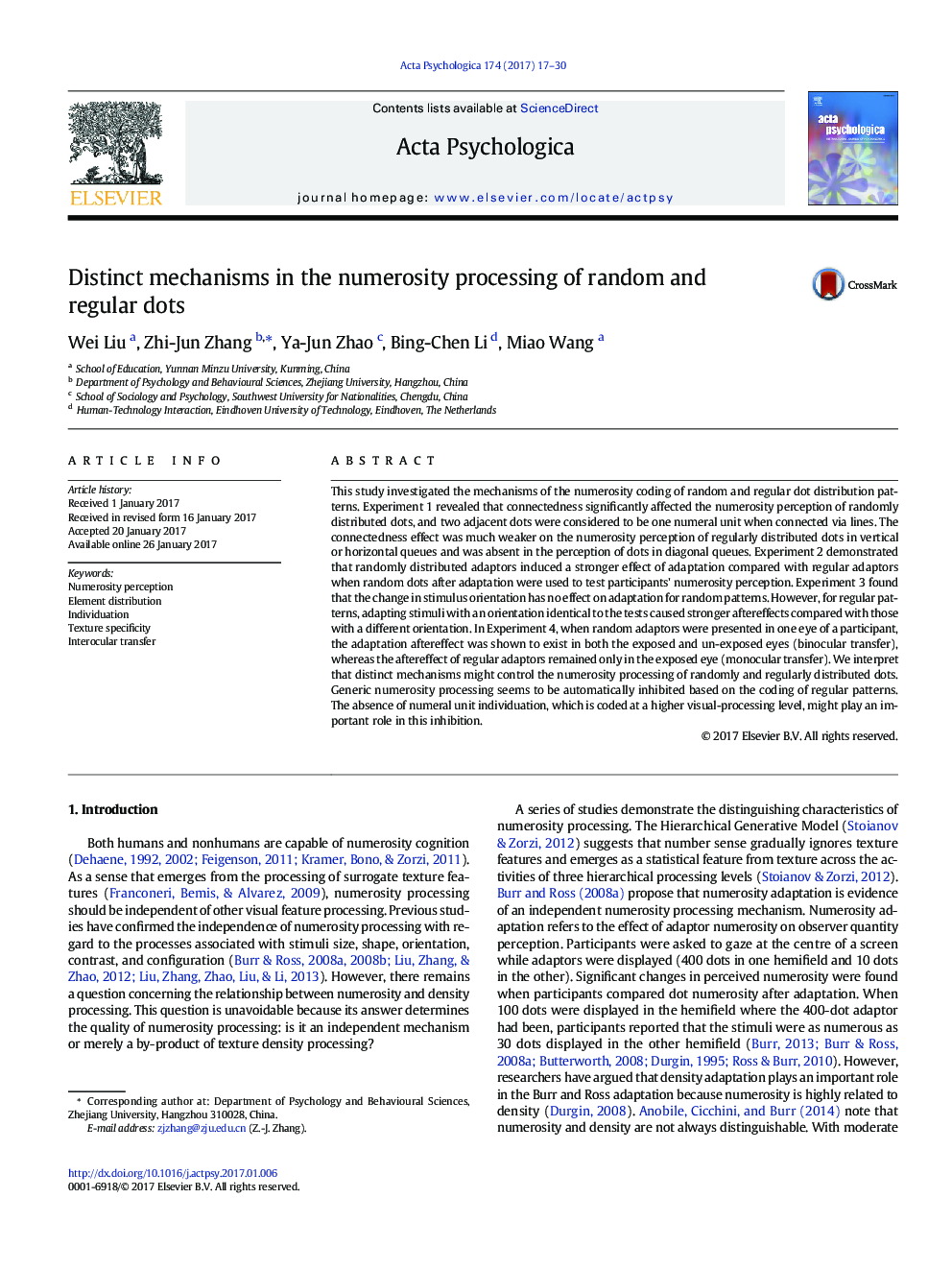| Article ID | Journal | Published Year | Pages | File Type |
|---|---|---|---|---|
| 5040236 | Acta Psychologica | 2017 | 14 Pages |
â¢Numerosity coding of randomly and regularly distributed dots are examined.â¢Connecting has distinct effects on numerosity perception of random and regular dots.â¢Random (but not regular) adaptors has stronger effect on numerosity perception.â¢Coding in regular (but not random) pattern is specific to element orientation.â¢Adaptation in random (regular) patterns is binocular (monocular) transfer.
This study investigated the mechanisms of the numerosity coding of random and regular dot distribution patterns. Experiment 1 revealed that connectedness significantly affected the numerosity perception of randomly distributed dots, and two adjacent dots were considered to be one numeral unit when connected via lines. The connectedness effect was much weaker on the numerosity perception of regularly distributed dots in vertical or horizontal queues and was absent in the perception of dots in diagonal queues. Experiment 2 demonstrated that randomly distributed adaptors induced a stronger effect of adaptation compared with regular adaptors when random dots after adaptation were used to test participants' numerosity perception. Experiment 3 found that the change in stimulus orientation has no effect on adaptation for random patterns. However, for regular patterns, adapting stimuli with an orientation identical to the tests caused stronger aftereffects compared with those with a different orientation. In Experiment 4, when random adaptors were presented in one eye of a participant, the adaptation aftereffect was shown to exist in both the exposed and un-exposed eyes (binocular transfer), whereas the aftereffect of regular adaptors remained only in the exposed eye (monocular transfer). We interpret that distinct mechanisms might control the numerosity processing of randomly and regularly distributed dots. Generic numerosity processing seems to be automatically inhibited based on the coding of regular patterns. The absence of numeral unit individuation, which is coded at a higher visual-processing level, might play an important role in this inhibition.
